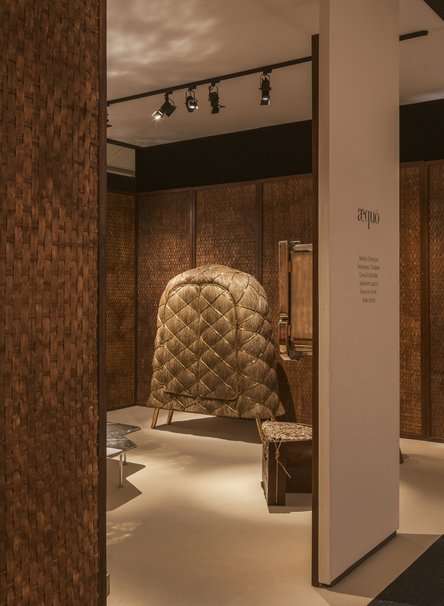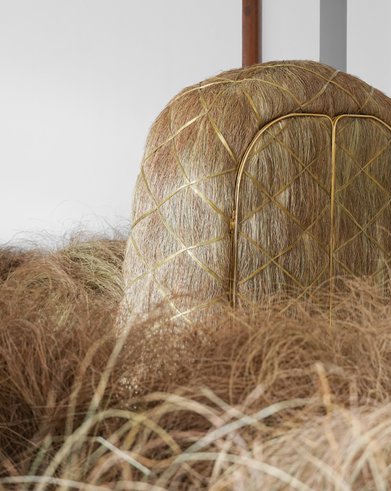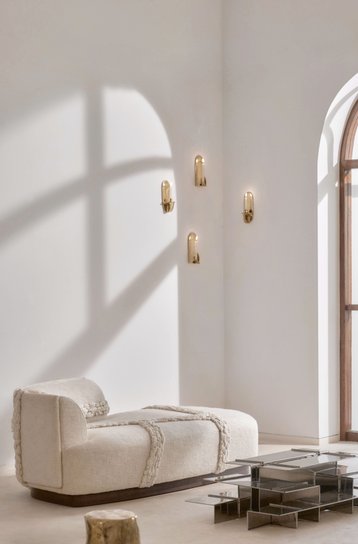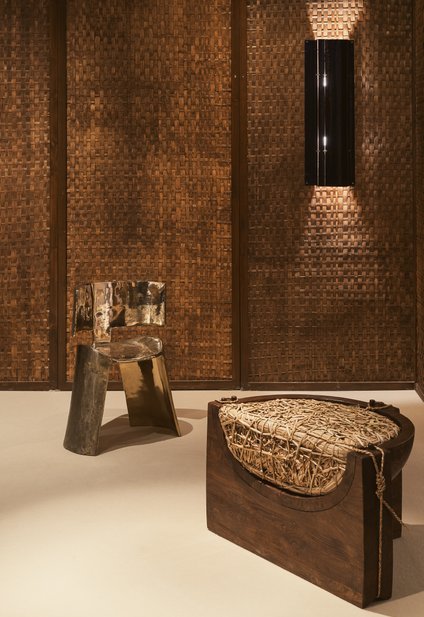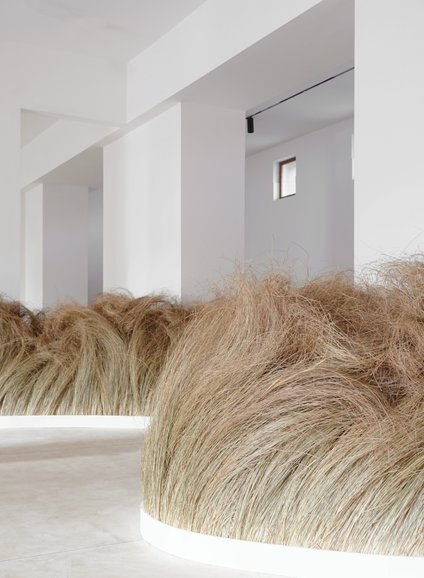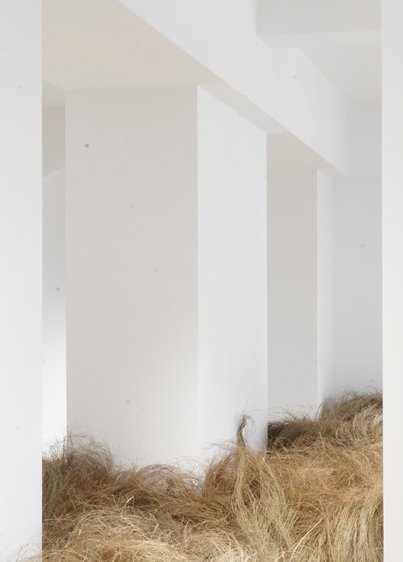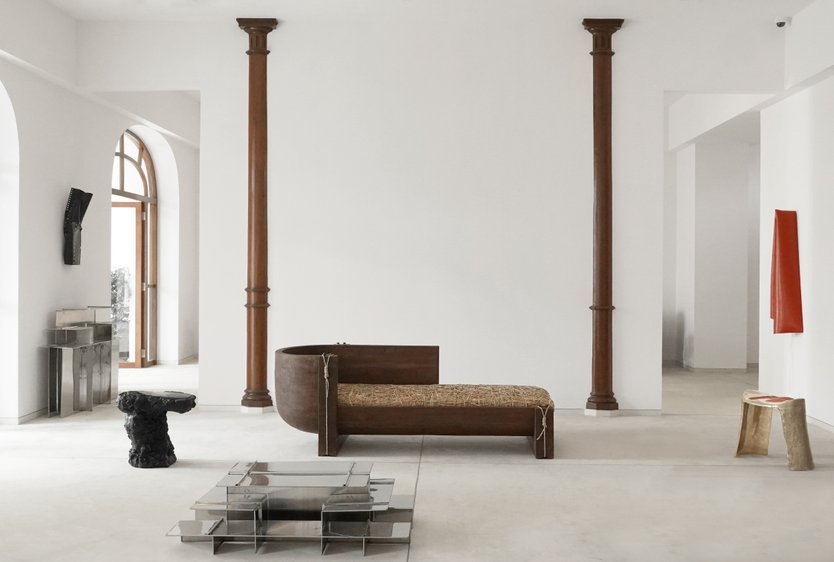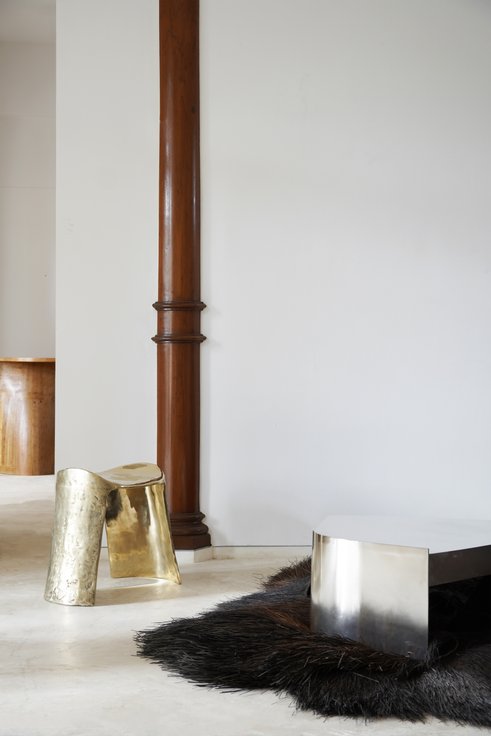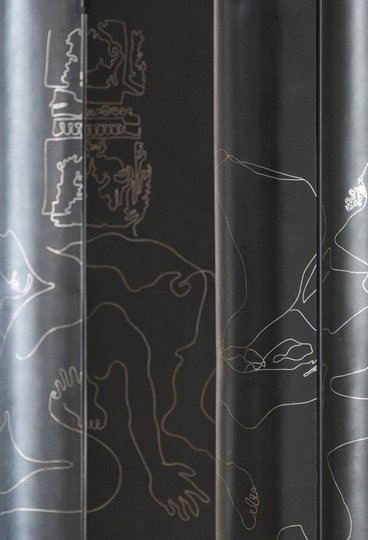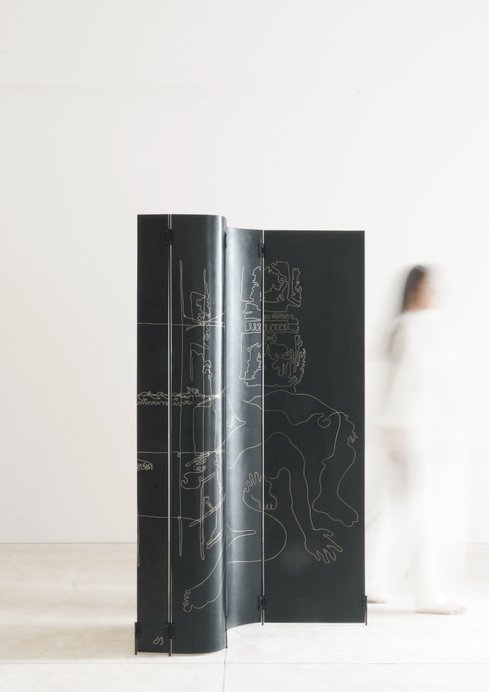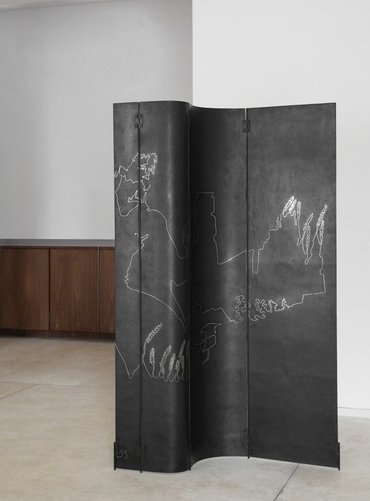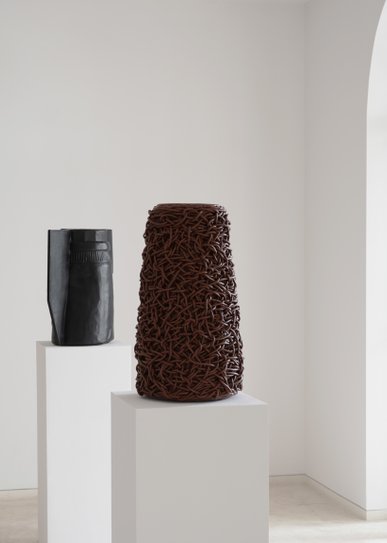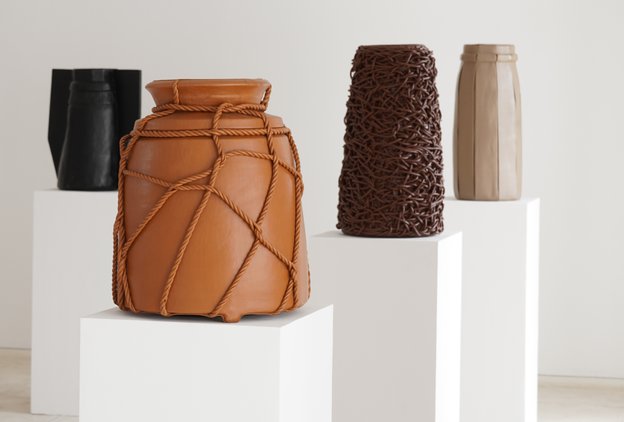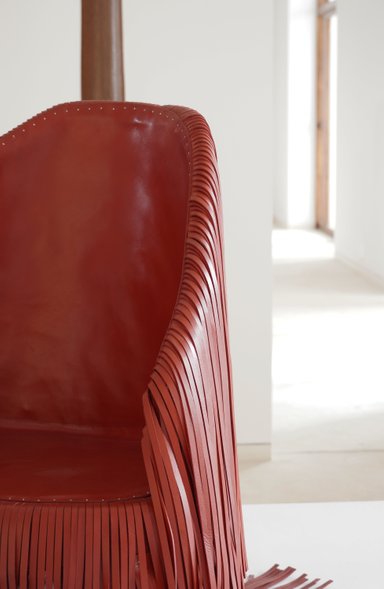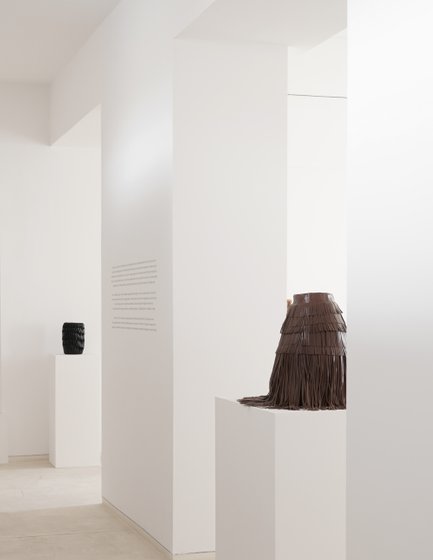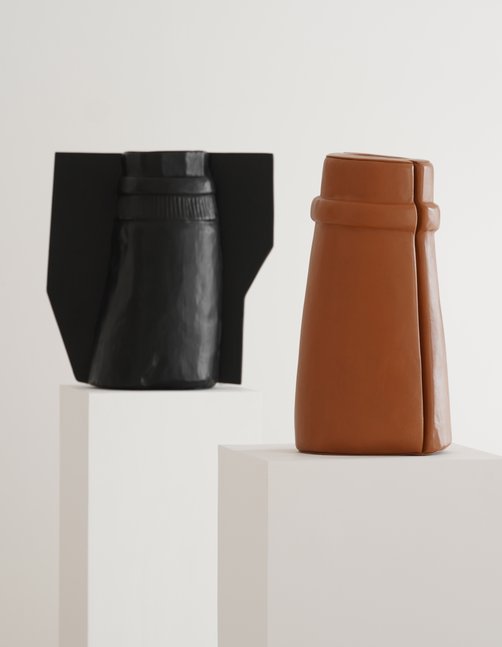Atuxua, æquō, Mumbai
11/2023
The gallery proudly presents a unique Indo-Brazilian collaboration with Estudio Campana. In Mumbai, Æquō has established itself over the past two years with a commitment to celebrating India's rich craft heritage through the collaboration with designers. The gallery invited Humberto Campana to delve into the history of India's techniques and raw materials.
This distinctive aesthetic has garnered international recognition for the Campana brothers, Fernando and Humberto, known for weaving Brazilian narratives into their contemporary sculptural furniture. Their journey, spanning nearly four decades, has been dedicated to transforming their observations of everyday life scenes into exceptional furniture and unique objects. Thus was born the famous «Favela chair,» which echoes the constructions of neighborhoods, the “Pirarucu” armchair crafted from incredible fish scale leather from the Amazon River, and the iconic «Plush chair» that references street plush toy vendors in Sao Paulo, to name just a few. Each of their creations, now represented by the most renowned galleries worldwide, is a tribute to their nation. These pieces, as they travel the world, carry with them Brazilian stories.
At the heart of this show is a solo piece, a cabinet, prominently staged amidst a field of grass. Drawing inspiration from India’s landscape and shape of traditional local bamboo objects, this grass cabinet is meticulously tied together with brass wires as delicate as the fiber itself, faithfully emulating the traditional technique used to bundle grass for trade. Weeks of hand work were spent sewing each blade of grass onto a bamboo lattice to recreate the impressive mass that Sabai grass represents during its harvest. The wild coat covers a solid brass structure created in Jaipur with æquō's partner workshop Frozen Music.Designed by Humberto Campana for the gallery, this exclusive work continues the tradition of paying homage to a nation through exceptional design.
PAD Paris, Æquō
04/2024
Curated space and show for æquo's second edition on PAD, Paris.
This year, in a handmade setting made near-by the splendid temples of Hampi, intertwined with bamboo, the walls of our booth will showcase pieces crafted from woven Sabai grass, enameled copper, engraved tables, hammered german silver, and casted metal pieces inlaid with local stones, or carved wood.
Kothi, æquō, Mumbai
11/2022
Kothi (home) is curated as a residential mise-en-scène for æquō Mumbai gallery and features the work of six designers: Valériane Lazard, Chamar, Wendy Andreu, Frédéric Imbert, Cédric Courtin and Florence Louisy.
Through a global perspective on India’s artisanal heritage, the spectrum of craft at every level is explored, with traditionally prized workmanship exhibited alongside more humble handmade techniques. The exceptional skills of small streetside karigars from Mumbai, who have no previous history of working with international designers, are shown to have a quality that stands proud next to celebrated workshops. In this intimate setting, intended to feel like the home of a collector, raw objects that are still in-process sit confidently next to impeccably finished pieces of collectible furniture. Even material is exhibited democratically: the recycled rubber of Mumbai-based studio Chamar elevated with a new preciousness when seen side-by-side the embroidery of Vastrakala, partner of Lesage Intérieurs in Chennai. These are not juxtapositions rather a balance that is the signature of æquō.
Handmade Tale, æquō, Mumbai
01/2023
Four majestic sculptural volumes engraved with pure silver, stands like columns. When unfolded, the Pila panels reveal the specially commissioned drawings of Boris Bucher in all their glory.
The free hand lines gleam from within the metal alloy oxidized in the mysterious earth of Bidar. They are scenes full of subtle storytelling: behind the bodies of Brucher’s signature wrestlers, there are references to the landscape andarchitecture of Bidar, as well as elements from the bidri process itself. Rivers and ruins can all beglimpsed in images charged with the same level of symbolism as Indian miniature paintings. The illustrations display Brucher’s research into the region and the craft; while the original works on paper make up part of the scenography, these are lines that were drawn to be hammered in silver. Commissioned and developed by æquō, the screens are exemplary both of the gallery’s collaborative process and ofits ambition to create masterpieces of contemporary craftsmanship.
The Pila screens are the work of mastercraftsman Mohammamed Abdul Rauf, whose Bidar-based workshop executed the historical silver inlay craft. Recently celebrated and credited with a revival of the technique, Rauf is considered to be one of only two mastercraftsmen in the art.
The metal technique of bidri takes its name from the city of Bidar in Karnataka, India, where thecraft was developed during the 17th century after arriving from Persia. Patronage by the Mughalempire, known for their sophisticated taste, created a tradition of masterpieces made with silverinlay. Later, the craft saw a revival after being featured in the Great Exhibition in London in 1851and the International Exhibition in Paris in 1855. Pieces from around this time exist in the collectionsof the V&A and the British Museum, while the rarer earlier examples are highly prized at auction.The craftmanship consists in inlaying a pure silver or gold wire in an alloy of zinc and copper.Cast, worked and oxidized in a deep black hue, the magic of this technique lies in the soil of Bidar. In contact with the engraved metal, the soil blackens the final piece instantly, showing off the silverinlay to perfection.
Living Archive, æquō, Mumbai
09/2022
Founder of the Ateliers Courtin workshops based in the Pondicherry-Auroville belt,Courtin’s craftsmanship was for a long time a carefully guarded secret of thefashion world. With a global reputation as being one of the most innovativeateliers in luxury, he has collaborated with a roll call of artistic directors, oftenon ultra-limited edition catwalk pieces and on weaving samples so conceptualthat they exist only in tiny panels archived in his Tamil Nadu studio.
Through this project curated by Florence Louisy, Courtin hasapplied his leather wrapping to a series of objects curated from across India.Forms used as leather moulds during Courtin’s prototyping, which are usuallyremoved at the end of the shaping process, inspire the fusion of material.For example, a wooden stool exhibits various forms of embellishment, eachfitted with couture precision. The familiar silhouette of a traditional Naga chairis contemporized with enveloping softness. And a collection of trays and platesall come with a new tactile touch.Each piece in Courtin’s leather intervention showcases a different techniquedrawn from his rarely seen archive. Fringing, braiding, embossing, interlacing andbasket weaving are all employed in finishes that are impossible to appreciate onappearance only. Behind the simplicity: hours of handwork, years of developmentand unmatched knowledge of his noble material.
